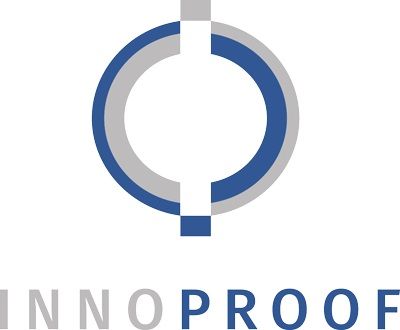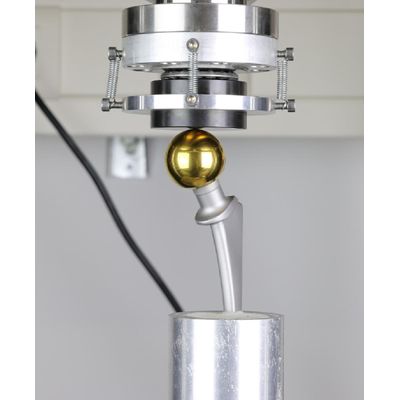

- Home
- Companies
- INNOPROOF GmbH
- Products
INNOPROOF GmbH products
Hip Replacement Services
ISO 7206-10 Static Head Burst Test
In the static burst test, the strength of the ball head is determined in connection with the stem trunnion. After the head has been attached to the stem trunnion with a defined force, a static axially acting load is applied to the head at a fixed rate. A termination criterion is, among others, a breakage of the head. For a successful test, five samples must be tested without failure to a defined maximum load.
ISO 7206-4 and -6 Dynamic Fatigue Test
The tests according to ISO 7206-4 and -6 refer to the shaft or neck area of the femoral component of hip endoprostheses. The fatigue strength of the hip stem is determined under a given sinusoidal load and over a defined number of cycles. The clamping as well as the applied loads differ according to the design of the hip stem, classified as a short, standard or revision stem. Moreover, special requirements arise depending on whether it is an anatomical design or a straight design. If the product has taper connection in the shaft or neck area, the tests are performed in a water bath in saline solution at 37 ° C.
ISO 7206-13 Femoral Head Torque Test
The femoral head torque test provides information on the torque required to disassemble the taper connection between a hip stem and head after a defined assembly. This is a static test with a single load application.
Knee Replacement Services
ISO 14879-1 Tibial Plateau Dynamic Fatigue Test
This fatigue test is used in bicondylar knee endoprostheses and especially addresses the metallic tibial plateau (tibial tray). The tibial plateau is fixed on one side (medial or lateral) for the test, with the other side oscillating freely. The fatigue strength of the tibial plateau is determined for a predefined load and number of cycles.
ASTM F1223 Restriction of the Range of Motion (ROM)
We offer you a characterization of the restriction of the range of motion of knee endoprostheses regarding the translational and rotational degrees of freedom according to ASTM F1223. For this purpose, either the tibia or the femoral component is firmly clamped to the test device while the other side remains movable. The stability of your individual knee endoprosthesis is assessed by five tests:

